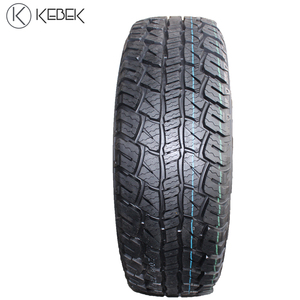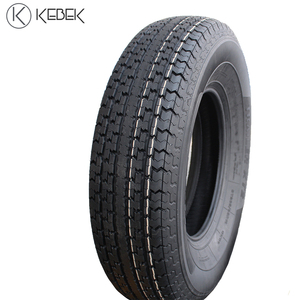
All categories
Featured selections
Trade Assurance
Buyer Central
Help Center
Get the app
Become a supplier

(2633 products available)

































33 12.5 R15 tires are a common size for off-road and light truck tires. The size indicates the tire's width, aspect ratio, and diameter. There are different types of 33 12.5 15 tires, as discussed below:
All-terrain tires:
All-terrain tires are made to provide traction on different kinds of surfaces, including roads and off-road environments. They are a popular option for truck and SUV owners. The 33 12.5 R15 all-terrain tires strike a compromise between on-road comfort and off-road performance. They feature a tread design that minimizes noise when driving on highways and provides grip on rocky paths or muddy terrains. Because of their adaptability, these tires are a favorite among overlanders and outdoor enthusiasts who need reliable equipment in various environments.
Mud-terrain tires:
When driving on soft soil or in muddy conditions, mud-terrain tires offer the best grip. The 33 12.5 R15 mud-terrain tires have aggressive tread patterns, wide voids, and high lug elevations to remove debris and clay effectively. These tires excel in off-road performance; however, they may produce more road noise and have a shorter tread life when used on paved roads. Mud-terrain tires are designed for off-road enthusiasts who frequently traverse difficult terrain, such as ATVs and 4X4 vehicles. They provide the traction and durability required to overcome the most challenging environments.
Rockcrawling tires:
Rockcrawling tires are created to provide the best traction on rocky trails and boulder-strewn terrain. The 33 12.5 R15 rockcrawling tires have a soft rubber mixture that is flexible and conforms to obstacles, increasing grip. They have a low-profile sidewall and a large tread contact area to maximize stability and traction. These tires are essential for rockcrawling enthusiasts who engage in competitive or recreational rockcrawling activities. Rockcrawling tires outperform standard and all-terrain tires in rocky environments, providing safety and performance for drivers who push their vehicles to the limit.
Highway-terrain tires:
These tires are designed for vehicles that primarily drive on highways with occasional light off-road use. The 33 12.5 R15 highway-terrain tires combine comfort, low noise levels, and good tread wear with highway-terrain capabilities. They are often fitted on trucks and SUVs. These vehicles can handle gravel roads and other mildly challenging environments. Although they are not as aggressive as all-terrain tires, highway-terrain tires offer versatility and reliability for people who need dependable performance on various surfaces.
Here are the specifications of the 33 12.5 15 tires:
Tire size designation
The first number indicates the tire's width in inches, which is 33. The tires have a nominal aspect ratio (percentage) of 12.5. The aspect ratio is not directly written on the tire but is calculated from the tire's radial sectional width of 12.5 inches. The aspect ratio indicates the tire's sidewall height, which is 12.5 inches. The last number indicates the diameter of the wheel in inches, which is 15.
Service description
The load index is not shown on the tire but is calculated from the maximum load table in the tire manual. The load index is 1080 pounds, and the corresponding load rating is 650 kg. The load rating is the maximum load the tire can carry when inflated to the recommended pressure. The speed rating is not shown on the tire but is calculated from the speed table in the tire manual. The speed rating is S, which corresponds to a maximum speed of 180 km/h.
Tread pattern
The tread pattern consists of two main parts: the tread and the tread design. The tread is the part of the tire that comes into contact with the road. The tread design is the pattern of the tread that provides traction and handling. The tire has a symmetrical tread pattern with a continuous center rib and interlocking shoulder lugs. This design provides stability and responsiveness on the road and off the road.
Construction type
The construction type of this tire is radial. Radial tires have plies that extend across the tire at 90 degrees to its centerline. This design allows the tire to flex and conform to the road surface, improving traction and handling.
Load index and speed rating
The load index is 1080, and the speed rating is S. The load index means that each tire can support a maximum load of 1080 pounds, and the speed rating means that the tire can sustain speeds of up to 180 km/h.
Tire pressure
The 33 12.5 15 tires should be inflated to a pressure of between 30 and 35 psi (pounds per square inch). Proper tire pressure is essential for safety, performance, and fuel efficiency.
Tread depth
The minimum tread depth for these tires is 32/32 inches. Tread depth affects traction, handling, and tire wear. Tires with low tread depth should be replaced.
Tire rotation
Tire rotation is vital to ensure even tire wear and extend tire life. The tires should be rotated every 6,000 miles or every other oil change. The recommended rotation pattern is front-to-back.
Wheel alignment
Wheel alignment is essential for vehicle stability and tire performance. The wheels should be aligned every 12,000 miles or if the vehicle pulls to one side.
Here is how to maintain the 33 12.5 15 tires:
Understand the Vehicle's Needs
The first step in selecting the right 33 12.5 15-inch tires is understanding the vehicle's requirements. Is the car primarily used for off-road adventures, on-road commutes, or a mix of both? Different driving conditions demand distinct tire traits. For instance, off-road tires excel in rugged terrains, while all-season tires offer versatility.
Driving Habits
Consider the driving patterns. If the routes often include highways, a tire providing stability at high speeds is imperative. For those who frequently encounter wet roads, tires with superior grip in rainy conditions are essential.
Tread Design and Type
Tread design plays a pivotal role in tire performance. Aggressive treads, characterized by deep grooves, are ideal for off-road settings, ensuring optimal dirt and mud traction. Conversely, moderate or symmetrical treads strike a balance, making them suitable for both on and off-road conditions.
Load Capacity and Speed Rating
Every tire has a specified load capacity, indicating the maximum weight it can support. Ensure the chosen tires can handle the vehicle's weight, especially if it's frequently loaded. Speed ratings denote the maximum speed a tire can maintain without performance degradation. Select speed-rated tires appropriate for the vehicle's capabilities.
Weather Conditions
In regions with heavy snowfall or icy roads, consider getting 33 12.5 15 tires designed for winter. These tires ensure safety and performance during frigid conditions. For areas with consistent rain, prioritizing tires with features that minimize hydroplaning risks is vital.
Brand and Quality
Opt for reputable tire brands known for quality and durability. While budget-friendly choices may be tempting, prioritizing quality in tire selection is crucial. Quality tires ensure better safety, longevity, and performance.
Budget Considerations
Establish a clear budget for the tire purchase. Remember that the most affordable option may not always be the most economical in the long run. High-quality tires might have a higher initial cost but can provide better fuel efficiency and durability.
Professional Advice
If uncertain about the ideal tire choice, consult a tire specialist or mechanic. They can assess the vehicle and recommend the best tires suiting needs and preferences.
Read Reviews
Tire reviews from other customers can offer insights into real-world performance, durability, and noise levels. Look for tires with high ratings and positive feedback from users.
Check Availability
Ensure the desired tires are readily available. Some specialized tires may have longer lead times or be out of stock during peak demand seasons.
By thoroughly assessing these factors, selecting the right 33 12.5 15 tires becomes a straightforward task. Remember that suitable tires enhance vehicle performance, safety, and fuel efficiency. After selecting the ideal tires, proper installation and regular maintenance are essential for optimal performance and tire longevity.
Many manufacturers of 33 12.5 15 tires, especially off-road tires, cater to the DIY market by providing easy-to-follow installation guides. Here are some general steps for replacing a 33 12.5 15 tire that a DIY buyer might find useful:
Q1: Do 33 12.5 15 tires exist?
A1: No, the 33 12.5 15 tire size is not valid. The correct size would be 33 12.5R15, indicating a 33-inch tall off-road tire with a 12.5-inch width and a 15-inch diameter wheel.
Q2: Are 33 12.5 15 tires suitable for on-road driving?
A2: Yes, 33 12.5 15 tires can be used on-road. They are all-terrain tires designed for off-road performance but provide good on-road handling, traction, and noise characteristics.
Q3: What gear ratio is recommended for vehicles using 33 12.5 15 tires?
A3: A gear ratio between 4.10 and 4.56 is often recommended for 33 12.5 15 tires, depending on the vehicle's engine and performance needs. This ratio strikes a balance between tire size and overall drivability.
Q4: How long does the 33 12.5 15 tire last?
A4: The 33 12.5 15 tire's lifespan depends on various factors, including driving conditions, tire maintenance, and the type of tire. On average, these tires can last 40,000 to 60,000 miles with proper care and usage.
Q5: Can the 33 12.5 15 tires be used for heavy-duty trucks?
A5: The 33 12.5 15 tires are generally designed for light trucks and SUVs. However, heavy-duty trucks may require larger tires with higher load capacities and specialized tire options for those vehicles.